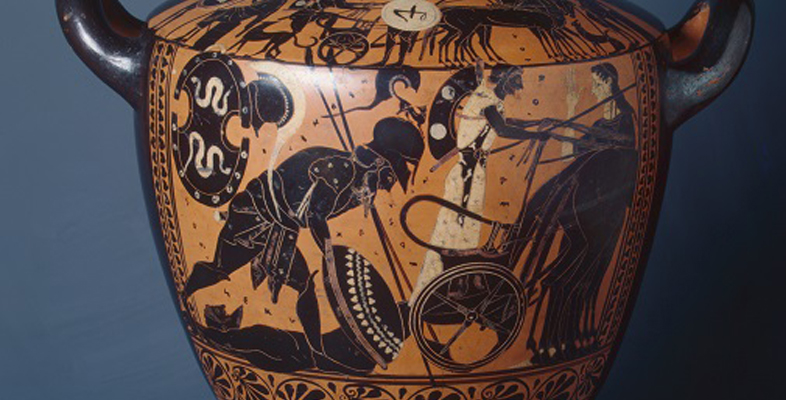3.3 Homeric music
You’ve now completed a close reading of the first seven lines of the Iliad, thinking about the effects of metre, word order, epithets, and the audience’s knowledge of the Trojan story. The only thing that is still missing from the whole experience of the Iliad is the music. As you now know, the Iliad would not have simply been recited, but sung with instrumental accompaniment. This may be one of the most difficult aspects of the original performance context to recreate, but it’s not impossible. A researcher named Stefan Hagel has been working for 35 years on creating a reconstruction of Homeric singing and music.
Activity 9
First, read this explanation of Stefan Hagel’s research method in recreating Homeric music:
Most scholars are convinced that Homer stood in a tradition of lyre-accompanied epic song, just as depicted in both the Iliad and the Odyssey. The melodies, which would have been improvised along with the text, are of course lost, the first Greek notated musical documents surviving only from about 400 years later. However, computer-aided statistics of word accents in the epics have shown that these were not distributed randomly; especially word-final accents accumulate in certain places, in a way that can only be explained as governed by melodic preferences. Patterns emerge that align melodic contours with metrical and grammatical units, even across verses.
On the basis of these patterns and the conventions of Homeric versification it becomes possible to improvise a melody for any piece of archaic hexameter poetry, adjusting the broader contours to the demands of individual word accents, so that the melody becomes a stylised representation of Greek speech – just as it is observed in notated music from the Hellenistic period (after 323 BCE) on. In the audio example below, the re-envisaged Homeric melody is accompanied on a seven-stringed lyre, the typical instrument of the early poets, tuned to what may have been the archaic version of ‘Aeolian’ – probably the closest we may get to a seventh-century BCE tuning, and in good geographic accord with the history of the epic language.
Now listen to this audio, in which Stefan Hagel performs an improvisation on the lyre and sings the opening lines of the Iliad.
Audio 4 A performance by Stefan Hagel
